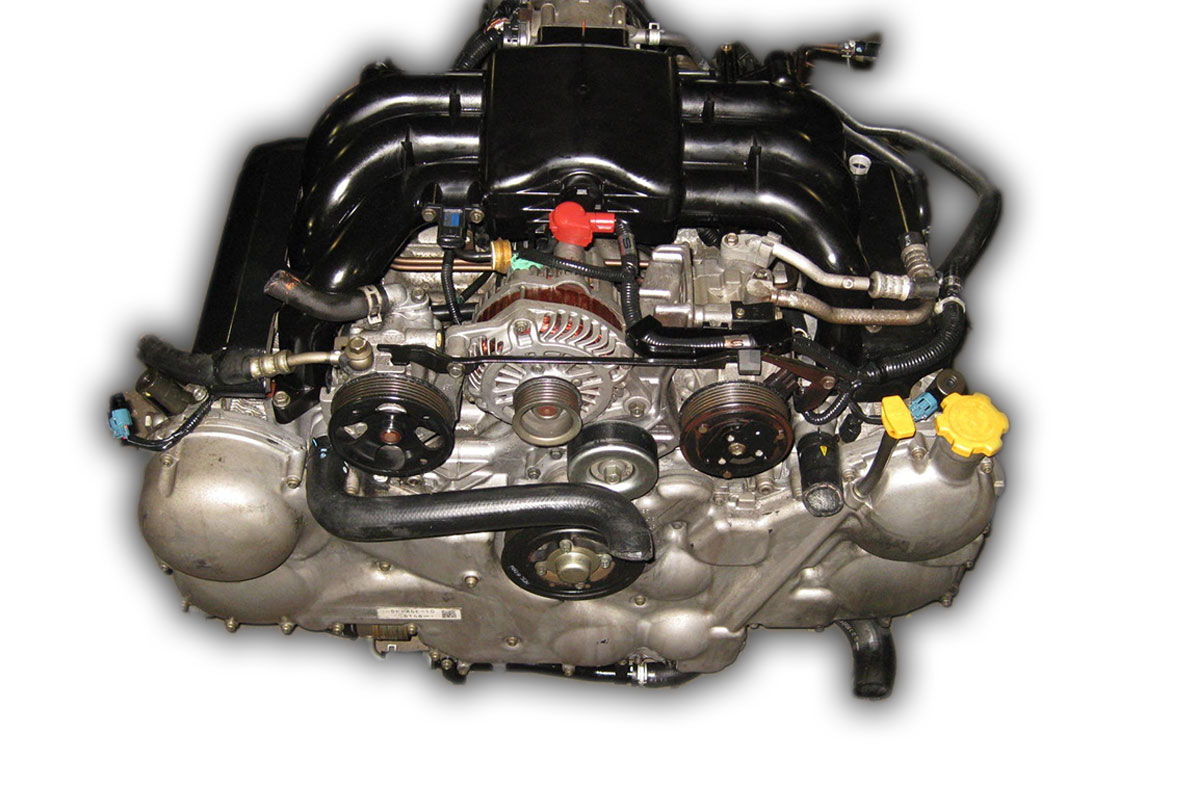Subaru has long been known for their flat-four “boxer” engines. These engines are fairly efficient, have lots of power when turbocharged, and have a low center of gravity. For Subaru’s larger cars a little four-cylinder isn’t quite enough.
This is where the flat-six engine comes into play. The EZ30D was designed as a replacement for the EG33 engine. In this short article, we’re going to cover everything you need to know about the EZ30D as well as specs.
For additional information check out the Subaru engine page on Wikipedia.
EZ30D: Engine Basics and Specs
Like we mentioned above, Subaru is well known for their flat-four engines. But they needed something bigger and more powerful for their larger vehicles like the Tribeca and Outback.
This cylinder block and cylinder heads are made of cast aluminum which helps save weight making this engine fairly light for a six cylinder. The flat design helps keep the center of gravity very low which improves handling.
The first version of the EZ30D uses a single exhaust port on the cylinder head. This can improve thermal efficiency but at the cost of a more complex and more expensive head.
The first version also used variable intake geometry which is a very cool technology that increases the range of the power band.
The second version of the EZ30D, known as the EZ30R (not an official Subaru designation) adds some features to improve power and efficiency. The cylinder head was redesigned using a three exhaust ports per head instead of just one.
Subaru’s variable valve timing system, AVLS, was utilized to increase power output. Subaru also added AVCS which is a camshaft phasing system onto the intake cams to further improve efficiency.
- Production Run: 2000 – 2009
- Cylinder Block Material: Cast Aluminum
- Cylinder Head Material: Cast Aluminum
- Weight: 320 lbs (Estimated)
- Valvetrain: Dual Over Head Cams – Four Valve per Cylinder
- Stroke: 80mm
- Bore: 89.2mm
- Displacement: 2,999cc
- Compression Ratio: 10.7:1
- Horsepower: 217 horsepower @ 6,000 RPM to 242 horsepower @ 6,600 RPM
- Torque: 213 lb-ft @ 4,400 RPM to 219 lb-ft @ 4,200 RPM
Cars That Came With the EZ30D
Cars like Impreza are perfect with a naturally aspirated or boosted flat-four boxer engine, but bigger cars need more torque. A small turbocharger could be used to increase low-end torque like Ford does with their EcoBoost engines, but Subaru decided to just add a couple of cylinders.
The current Legacy, Outback, and Tribeca use a larger EZ36 engine.
- 2000 – 2004: Subaru Outback H6 (EZ30D)
- 2000 – 2002: Subaru Legacy GT30 (EZ30D)
- 2000 – 2002: Subaru Legacy Lancaster 6 (EZ30D)
- 2003 – 2009: Subaru Legacy 3.0R (EZ30R)
- 2005 – 2009: Subaru Outback 3.0R (EZ30R)
- 2006 – 2007: Subaru Tribeca (EZ30R)
EZ30D: Known Problems
In the past Subaru flat four engines and the old flat-six engines were known for head gasket failure. This is a pretty expensive repair, but with the right components, such as ARP head studs, the head gasket problem can be fixed.
Fortunately, the EZ30D doesn’t seem to be affected by this head gasket issue. The most common problem for the EZ30D is overheating. This can typically be solved with an upgraded radiator since the factory one is on the small side.
EZ30D: Tuning Potential
In the Subaru world, most tuners gravitate towards the EJ20 or EJ25 engine. These have been proven to be tough little motors when built correctly and many tuners make big turbo kits for them.
There are a couple of tuners, however, that have used the EZ30D engine instead. The larger displacement of the EZ30 can allow for more torque and potentially more horsepower. That is assuming you can deliver enough fuel to the engine to make that power.
For naturally aspirated builds a simple intake and exhaust will gain around 20 horsepower. The best option is going with a turbocharged setup. With some low compression pistons, water injection, a Garrett GT3582R, and some custom tuning Perrin Performance was able to get 440whp (500bhp+) out of their EZ30D.
Mathematically the EZ30D actually holds up to the same amount of power as an EJ25. That extra displacement makes a world of difference. We recommend checking out the full blog post about Perrin Performance’s build.
Disclosure: As an Amazon Associate, I earn from qualifying purchases made through links on this website.

thanks a lot so informative.
though i never got the main difference between EZ30D AN EZ30R
D is cable drive, and R is drive by wire.